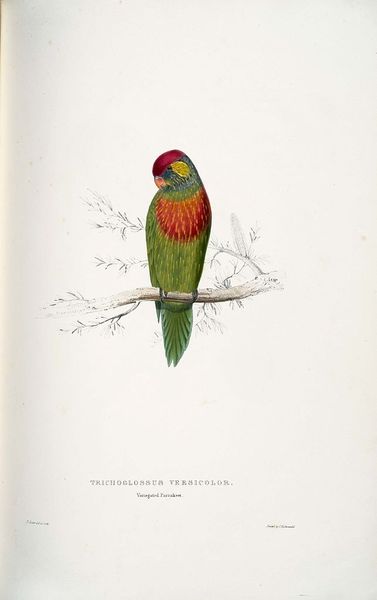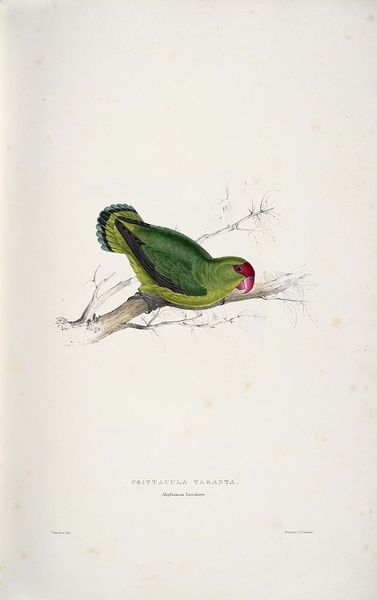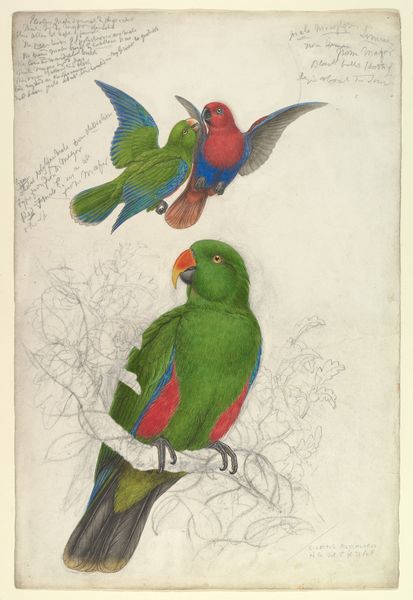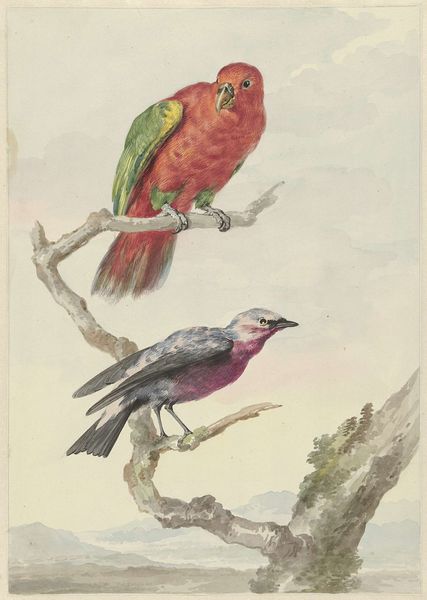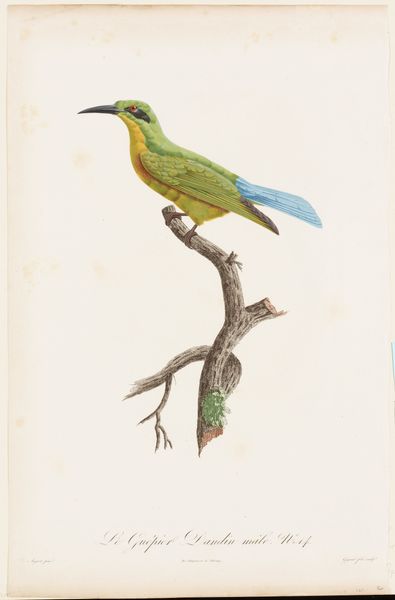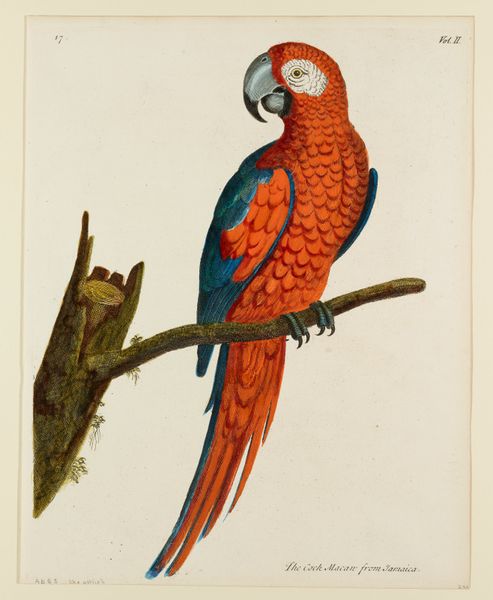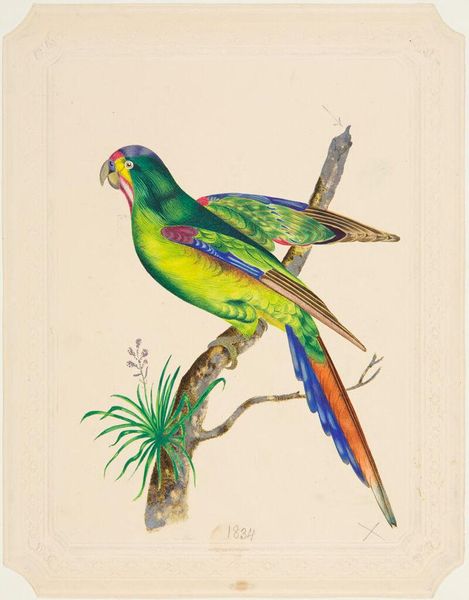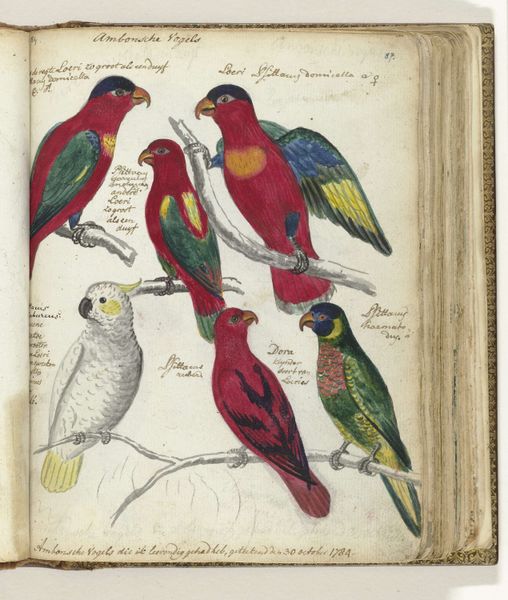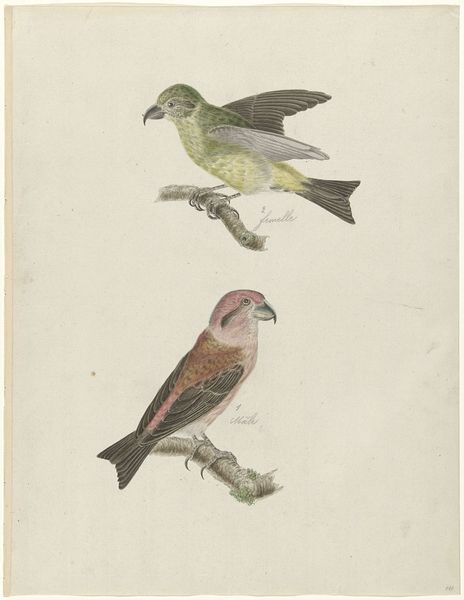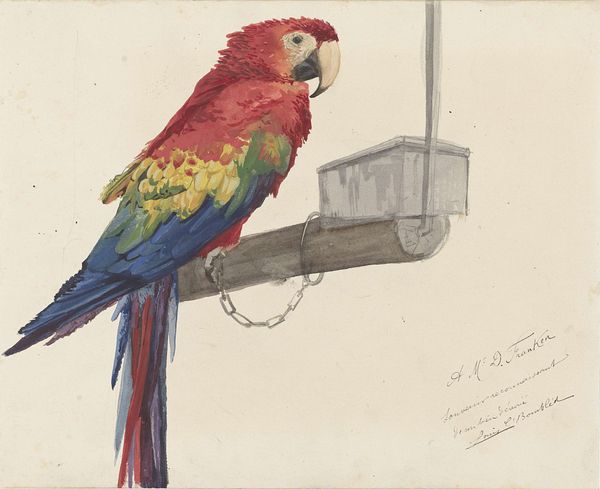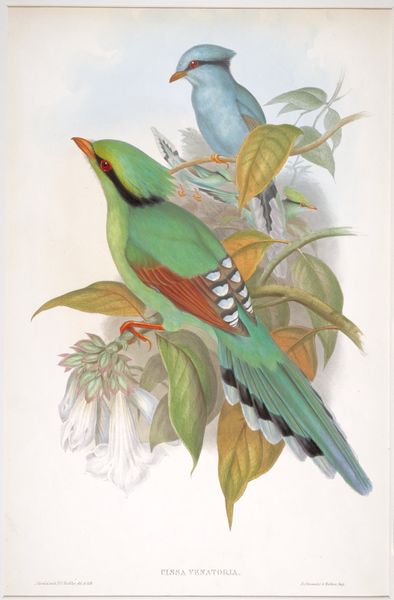
drawing, watercolor
#
drawing
#
landscape
#
bird
#
watercolor
#
watercolour illustration
#
watercolor
#
realism
Copyright: Public domain
This print of Kuhl's Lorikeets was made by Edward Lear, a British artist known for his natural history illustrations, using lithography, a process that democratized image-making in the 19th century. Lithography involves drawing with a greasy crayon on a stone or metal plate, which is then treated to accept ink only where the crayon has marked. The resulting print captures fine details, as seen in the birds' plumage and the delicate branch. The lithographic process allowed for multiple impressions, making images like these accessible to a wider audience. Consider the amount of labor involved. Lear would have made many images throughout his career, and the printing process itself would have been industrialized to some extent. The production line would have involved workers operating printing presses, preparing stones, and so on. So, while this image represents a scientific interest in exotic species, it is also connected to the expansion of print culture and its attendant industries. Ultimately, this print sits at the intersection of art, science, and industry, reminding us that even seemingly straightforward images are embedded in complex social and economic systems.
Comments
No comments
Be the first to comment and join the conversation on the ultimate creative platform.
